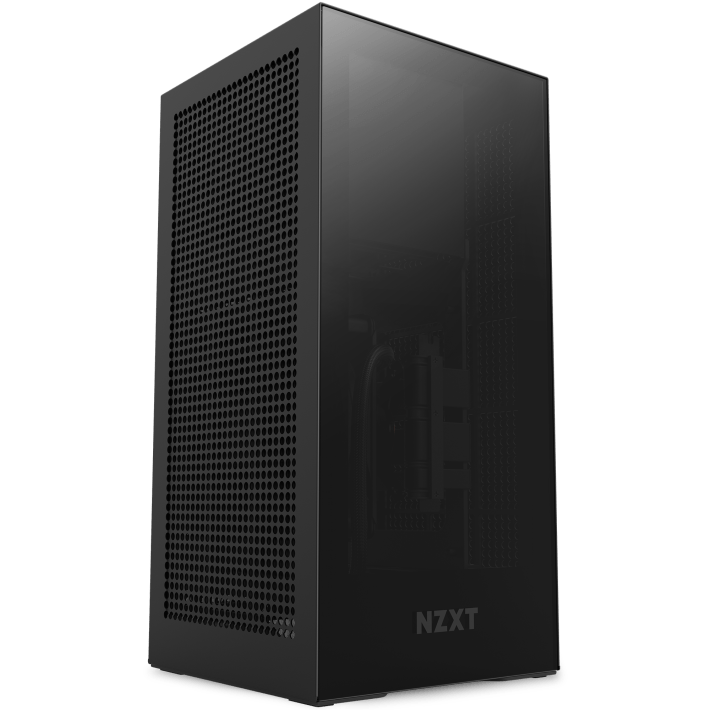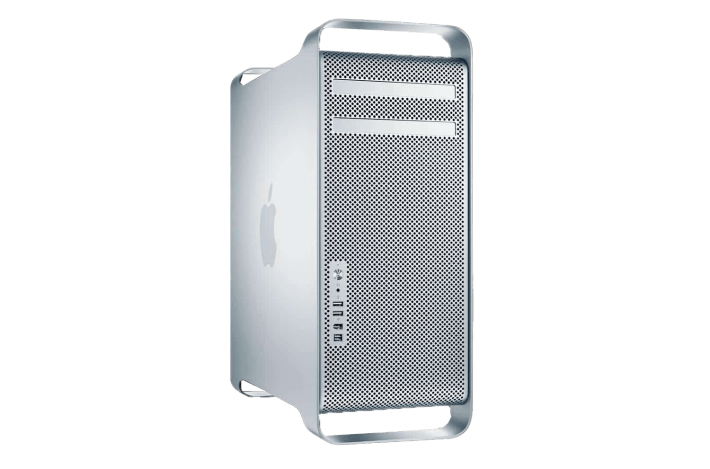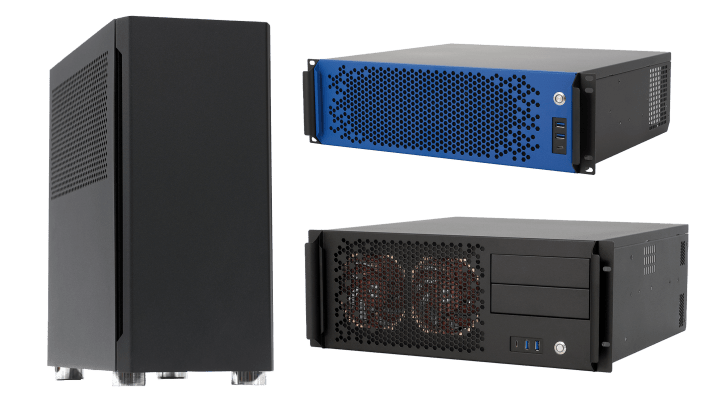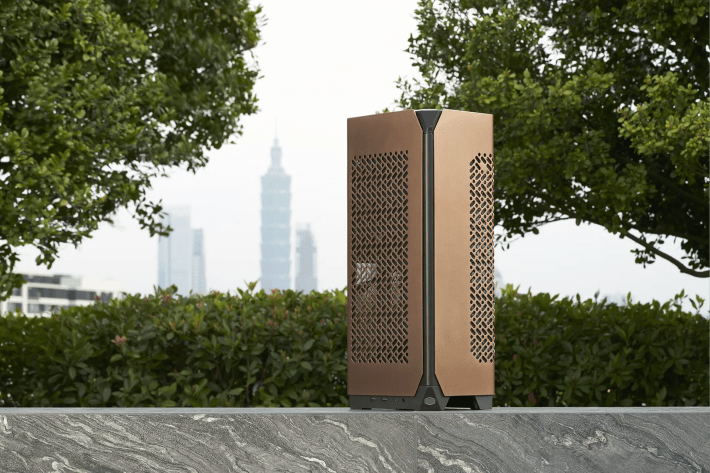I am a simple man, with simple needs. I am building a PC, and I would like it to not look embarrassing. I would like it to be able to fit a full-sized ATX motherboard. I want good airflow and to be able to fit a real cooler in there. I don’t want logos. I don’t want a little acrylic window, I know what's in there. I would like it to be well-made and not look like shit. This, it turns out, is surprisingly difficult.
Now you may say to yourself: but Chris, here are several great-looking PC cases, and yes I have seen probably all of those. Few of them meet my needs or my tastes. Slightly before and during the pandemic, I got into the hobby and obsession of small form factor PCs. SFFPCs, as they are known, are a niche of PC building generally, the locus of which are the Small Form Factor Forums. The goal is space maximization and efficiency, to create the best PC for your use case in the smallest package. Another huge upshot is that they also tend to be well-built and aesthetics focused – niche products aimed at a high end market for people who like a clean-looking build that isn’t marred by lights.
SFFPCs come with trade offs. First, they can often be difficult to work inside, although the design lessons learned in the field of SFFPCs have made PCs cases generally easier to use and more creative. Second, maximizing your space usage means you will often hit compatibility issues with the cooler, power supply and gpu size. Many are limited to Mini ITX motherboards, although there are increasingly more that support full ATX boards with some caveats.
I have built two SFFPCs. The first is my media and living room PC, which I still use, fit snug inside a sandwich-style Loque Ghost S1. I love that little guy, he does what he needs to and nothing more, although the process of installing the low profile cooler at the time required me to physically bend it to fit it in, which my good friend mentioned “feels real bad” as we were doing it. The second SFFPC I have is my current PC, which is currently dying a slow death. There are many reasons for this, but most of them have to do with a company called NZXT.

During the pandemic I really needed a case, power supply, and cooler for my build, and there were few options. I was lucky enough to have bought most of the parts I needed before chip shortages made that impractical until relatively recently. NZXT had recently put out the H1, a clean looking semi-SFFPC case, which came with a built in AIO cooler, and a power supply. It seemed perfect. I was incorrect.
The airflow on my H1 was atrocious. Thermals became difficult to handle for real workloads without severe throttling. At one point an entire hard drive died out of nowhere, one with very important show files, because it was mounted on the bottom of the motherboard which meant that it was perched directly next to the very hot GPU. The GPU and AIO are also pointed downward, which means you have to turn the thing over every time you want to plug or unplug something. There was also the issue of a potential fire.
People who regularly follow hardware cases know the NZXT H1 because of this specifically. Due to how the GPU riser was initially designed, the metal screws could theoretically create a spark which could catch fire. Gamers Nexus investigated this, showing that it was indeed possible. This led to NZXT responding, and eventually the entire thing ended with them sending out a bunch of nylon screws to people and saying they were sorry.
But at this point I am less concerned about that (the nylon screws are in there). My computer shuts down randomly whenever I use Shadowplay and has made my life miserable, so I am starting from scratch. And the more parts I buy, the more I realize I don’t care about Small Form Factor PCs. I am in a different place in my life. When I started this build I was still under the impression that I would have a case roughly the size of the H1, but I have a huge desk and a lot of room. I realize I miss having extra PCIE slots. I want a good power supply. I want as many M.2 slots as I can fit in there. I want a cooler that is quiet and can, well, cool. I’m tired of this hobby for my workstation. This is also coupled with the fact that GPUs are often massive now.
I have been pulling my hair out trying to square the circle. I thought I actually had it figured out when I purchased a Meshroom S from a company called SSUPD a year ago, before my build crystalized (rookie mistake). It looks gorgeous. It has a beautiful powder coat. It can fit an ATX power supply and an ATX motherboard. Well, sort of. Basically in order to get it in there you are making concessions. SSUPD has a huge compatibility guide, showing off various configurations. The cool thing about the case is that it allows you to put the GPU and coolers in various places to accommodate it. But you have hard limits on what coolers you use, what PSUs you can use, and I am a different person than when I have bought it, so I may just put the functioning parts my old PC in there as a cool-looking server and take the H1 out into the field and shoot it with a gun and leave.
The Hyte Revolt 3. Looks good! Looks easy to work in! Just make one that is bigger! Hyte (a subsidiary of iBuyPower) has other cases that are all exclusively glass cubes with optional vtubers on them.
In my mind, what I really want is a case like a Mac Pro. An old one, before they turned into a weird tube and back. This is perhaps showing the video editor in me and my age, but Apple already designed the PC case there. It was sleek, it had handles, it was well-built and it was easy to work with. I also happen to know people who work at an e-waste facility that regularly gets them, and I have seen people do conversions of them, but that’s a lot of work for something that might not be the ideal case for me.

There is also, always, Sliger. Sliger makes good PC cases. They are slightly boxy, but unadorned, perhaps even a little plain for my tastes. You can throw a handle on one. They retain their value because they are very well-built, powder-coated metal, and the closest thing to just an industrial box like the Mac Pro. They also sell a bunch of rack mounted cases if you roll like that. I had a friend who had one and swore by them. The Cerberus X, which bills itself as the world’s smallest ATX case, is simple, straightforward, and well-made. It is also $265.00 plus shipping and handling, so I need to sit with myself and that decision.

I respect Sliger, but what really frustrates me is that they are basically out there themselves. ATX PC cases are still a clown show. It’s a market segment exclusively aimed at people who love shoving RGB lights in their builds, which I detest. The Fractal Design North almost gets it right, but then they put wood accents on the front which don’t do anything thermally and I find somewhat embarrassing. The Deepcool Morpheus gets close, with great modularity (I really want the teal paint job they showed off), but it still has a side window. Despite being ITX only, the Cooler Master Ncore 100 Max is really on to something, although it comes with a power supply and cooler preinstalled and I am never making that mistake ever again. Cooler Master is also doing fun stuff with the QUBE 500 Flatpack, which allows for decent airflow, compact shipping, a handle, and modular design choices. Honestly if they just made a version of this that was big, I would buy it in a heartbeat.

I am tired of making concessions with my build. I am also tired of doing any of this, really. I am sure that there are some examples I missed, but I tend to be pretty thorough about these things and this should not be that hard. At the end of the day I am just going to probably cave and buy a Sliger, because they seem alright people who make a good product and I’d like them to have some walking around money, but it shouldn’t be this difficult to find a robust PC case that I don’t want to hide from guests. We live in a world where Apple has more money than several small nations, you would think people would have learned a few things from them about design by now.


